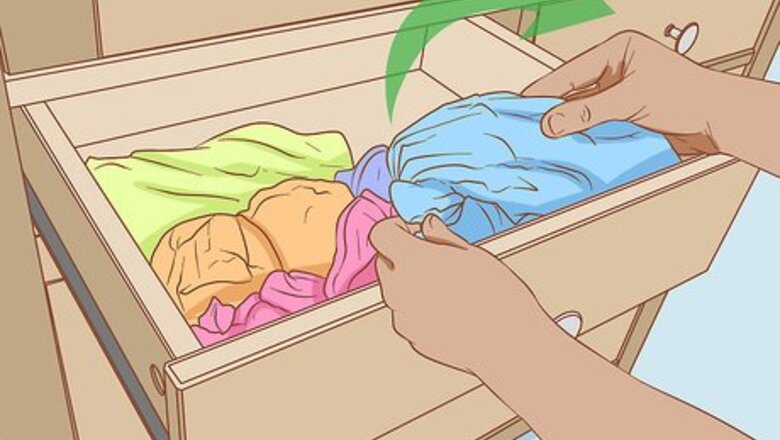
views
Sorting Your Clothes
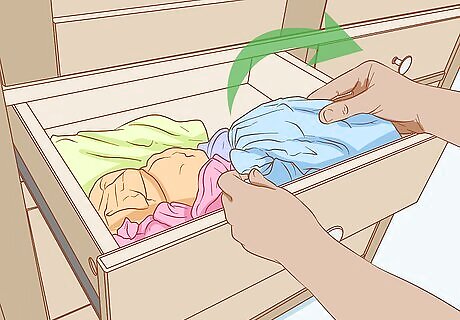
Take all of your clothes out. The first step to organizing your clothing is sorting your clothes. You can do this by taking everything out of your closet, wardrobe, or dresser and piling it on the floor or bed. If you keep your clothes in multiple places, consider tackling each place one at a time. For example: If you keep your clothes in a closet and a dresser, sort and organize your closet first. Then, once you have finished, repeat the whole process for your dresser. Consider getting a box or basket for any items that you find that do not belong in your closet, wardrobe, or dresser.
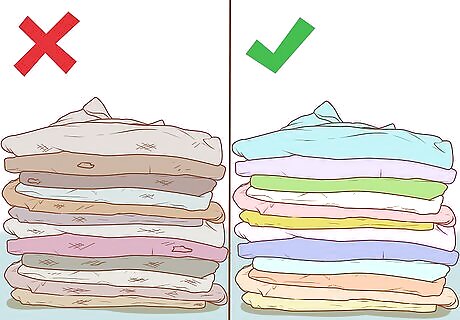
Sort your clothes into two piles. Create two different piles: a "keep" pile and a "get rid of" pile. Put the clothes you do wear into the "keep" pile, and the clothes you don't wear anymore into the "get rid of" pile. Try to spend no more than a few seconds when deciding which pile you should place something into. If you need more than a few seconds to decide on whether or not you will wear something again, consider creating a third pile. This pile will be the "maybe" pile, and it will hold the items you need to give more thought to. You can also use baskets or boxes to hold your clothes as you sort through them instead of just piling them on the floor or bed.
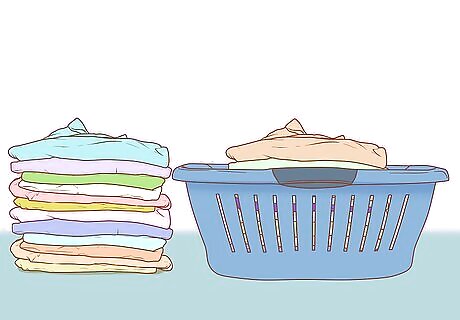
Sort the clean clothes from the dirty ones in your "keep" pile. Once you have decided what clothes you will be keeping and getting rid of, it is time for you to further divide up the piles. Go to your "keep" pile and sort out the clothes that need to be laundered from the clean clothes that can be hung up or folded up and put away.
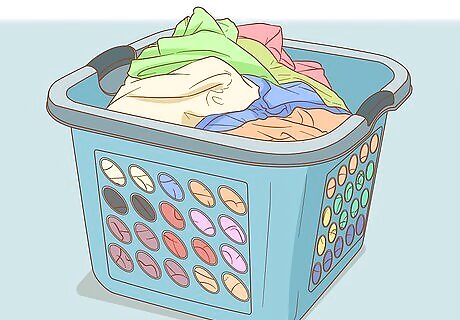
Put the dirty clothes into the laundry basket. Once you have finished sorting the clean clothes from the dirty clothes in your "keep" pile, take the dirty clothes and put them into a laundry basket. This helps prevent things from piling up and taking up space. To save time, put your dirty clothes into the washing machine now. This way, they can wash while you continue sorting and organizing.
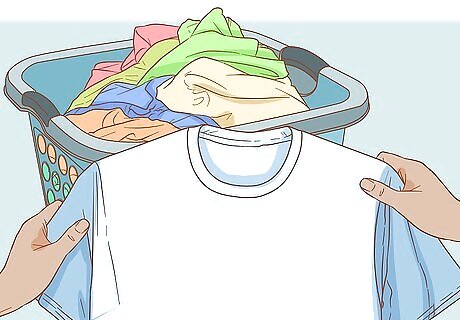
Further divide up your "get rid of" pile. You may have placed clothes into the "get rid of" pile either because you no longer like them, they don't fit you any more, or they are too faded, stained, or torn to be worn. Some of these clothes will need to be thrown away, while others can be donated. Go to your "get rid of" pile and separate the clothes that are still in good condition from the clothes that are ripped or stained. Clothing that will be donated should be in decent condition. There should be no rips, tears, stains, or fading.
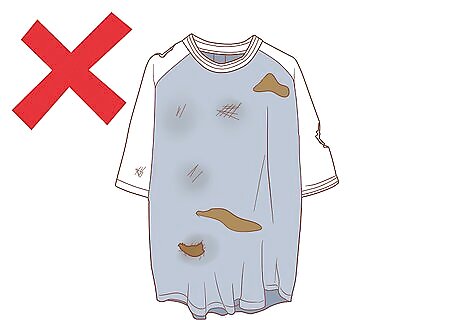
Throw away the clothes that are faded, stained, or torn. The clothes that are too damaged to keep or donate will need to be thrown away. You can either throw them away now, or put them into a trash bag to throw away later, once you have finished sorting and organizing your closet. Consider cutting up the torn clothes and saving the scraps for other purposes. Cut up T-shirts can make great cleaning rags, while scraps from plaid shirts can make great patches. Consider repurposing or up-cycling the clothes into new items. For example, a pair of jeans that are shredded and torn at the knees can become a pair of trendy shorts or a skirt.
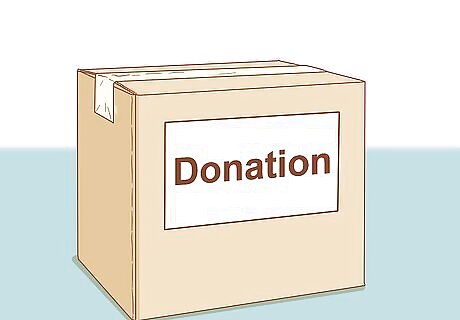
Donate the rest of the "get rid of pile." The clothes that are still in good condition but that no longer suit you can be put into a box or bag and taken to your nearest donation center. You can do this now, or wait until you are done organizing your clothes. You can also give away your clothes to a friend or younger sibling. Consider selling your clothes online or at a garage sale.
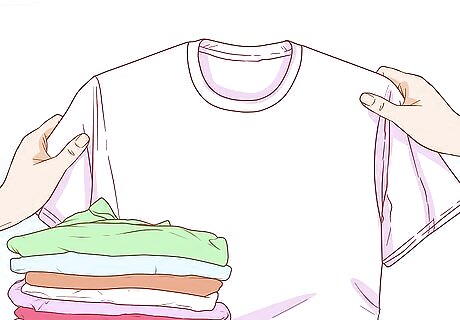
Review your "keep" pile. After you have finished sorting your clothes, you may decide that your "keep" pile is still looking big. Now is the time to go through it again. If you have a "maybe" pile, you can sort through it at this time as well. Some of the clothes may still fit you, but they may no longer fit your lifestyle. Others may no longer look good on you. Go through your piles and ask yourself once again whether or not you would wear the clothes again. Ask yourself these questions: Does that color look good on me? Do I feel comfortable wearing that color? Some colors may look better on you than other colors. Choose ones that flatter your skin tone and hair color. More importantly, keep colors that you feel comfortable wearing. Does this cut look good on me? The jacket you bought may have looked really cute on the mannequin in the store, but it may not flatter you at all. Keep clothes that flatter your figure. How often do I wear this? Ever since you started your new job at the office, your wardrobe has gained several black slacks and button-up shirts. The colorful blouses and dresses you used to wear before you started your new job are now taking up space, unused. Consider giving them to someone who may appreciate them and wear them often.
Organizing Your Closet and Wardrobe
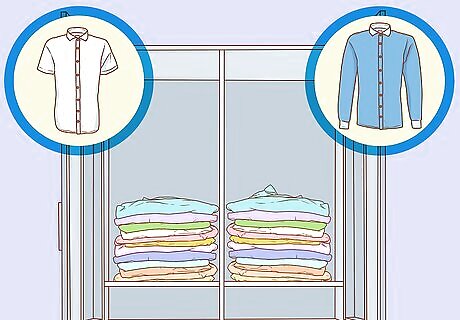
Create sections in your closet or wardrobe based on type of clothing. Sorting your clothes by type might help you find what you are looking for faster. It will also make your closet or wardrobe look neater and more organized. You can do this by dividing up your closet or wardrobe into different sections, and hanging your clothes in those sections. Examples of sections include: shirts, skirts, pants, dresses, and coats. If you have created a section for shirts, consider dividing that section further into short-sleeved shirts and long-sleeved shirts. For a more organized look, you can make little tags out of paper and hanging them between the different sections. You can then label the tags to remind you what section is what. EXPERT TIP Kathi Burns, CPO® Kathi Burns, CPO® Board Certified Professional Organizer Kathi Burns is a board certified Professional Organizer (CPO) and Founder of Organized and Energized!, her consulting business with a mission to empower people to master their environment and personal image by assisting them in taking control, making change and organizing their lives. Kathi has over 17 years of organizing experience and her work has been featured on Better Homes and Gardens, NBC News, Good Morning America, and Entrepreneur. She has a BS in Communication from Ohio University. Kathi Burns, CPO® Kathi Burns, CPO® Board Certified Professional Organizer Expert Trick: Hang all of the clothing in your closet with the hangers turned backwards. Any time you take something out and wear it, turn the hanger the right way. Then, at the end of 6 months, go through your closet and get rid of anything that's still backwards, since it's not something you wear regularly.
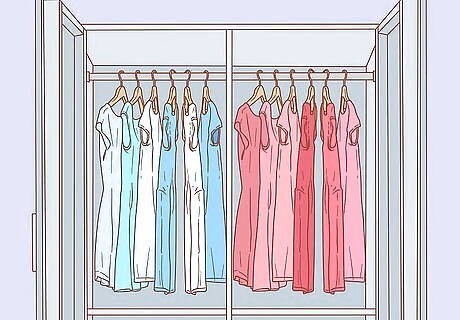
Sort your clothes by color. You can create a more coordinated look in your closet or wardrobe by hanging all of the different colors together. This means that you hang all of the reds together and all of the blues together. Try organizing your clothes first by type, and then by color. For example, you can hang all of the blue shirts together, and then all of the red shirts together.
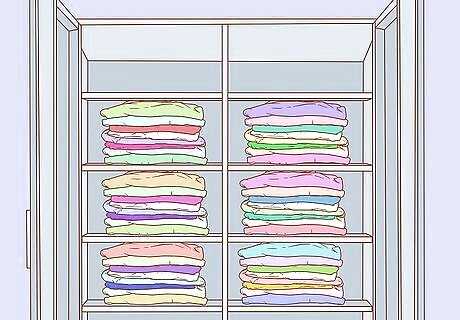
Consider adding shelves into your closet or wardrobe. Closets and wardrobes don't have to be just for hanging clothes; you can install shelves to store folded items such as pants and shirts, and bulky items such as shoes and accessories. The shelves can be installed directly into your closet, or they can be a simple bookshelf wedged in a corner or beneath the shorter hanging items (such as shirts). If you do not have room in your closet or wardrobe for a shelve, consider adding in a hanging shelf instead. Hanging shelves are shelves made from fabric, canvas, or plastic cloth. They can be folded up when not in use, or they can be hung from the rod on which the rest of your clothes hand. They can be used to store hats, scarves, shoes, and other accessories.

Add a plastic drawer unit. Just because you don't have space for a dresser does not mean that you can't store items in drawers. Buy a plastic storage unit with drawers and keep clothing that can be folded inside. If the unit is tall, keep it in the corner of your closet or wardrobe. If the unit is short, store it beneath the shorter hanging clothes, such as shirts. Using a plastic drawer unit helps to store clothes more efficently. Try getting a drawer unit with clear or frosted drawers that will let you see what you have inside. You might be more likely to wear something you can see as opposed to something you can't see. Try getting a drawer unit with wheels. This will make it easier to move around.
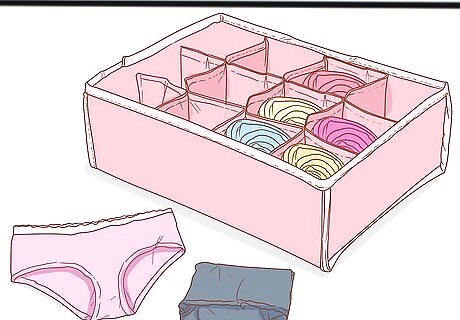
Use boxes or baskets to store smaller items. If you don't have a dresser, you can keep small items, such as undergarments and socks, in colorful boxes or baskets. Keep these boxes and baskets on shelves. Buy boxes or baskets that are all one color to create a more unified look. If you are storing your boxes or baskets on a shelf, consider using a contrasting color. For example, if your shelf is white, use boxes or baskets that are black or a bright color, such as neon green or pink.

Store your shoes in your closet. Keeping your shoes in one place can help you get ready faster in the mornings. It will also make your closet look neater. There are many different options for storing shoes: Plastic or cardboard shoe boxes can store special-occasion or out-of-season shoes when you are not wearing them. Store these boxes on a higher shelf. A handing shelf made from canvas, fabric, or plastic cloth can be used to store larger shoes such as boots. An over-the-door shoe caddy can be hung over the door of a wardrobe or on a hook in your closet. It works best for slender shoes, such as flats and loafers. Shelves and cubbies can be used to store all sorts of shoes, from flats to heels to boots. Consider organizing your shoes based on type: all of the flats go on one side of the unit, and all of the heels go on the other side. A wooden thread spool rack can also be used to store shoes. Hang each shoe by the heel over the pegs. This works best for flats, sneakers, and loafers.
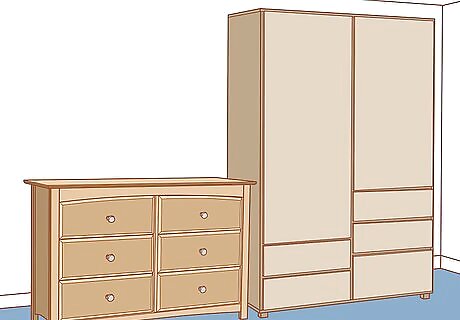
Consider moving your dresser into your closet. If your closet is large enough, and if you own a dresser, you can save space by moving the dresser into the closet. If the dresser is low enough, you might be able to hang shorter items, such as shirts, above the dresser. This keeps all your clothes in one place, which may help you get ready faster in the morning.
Organizing Your Dresser
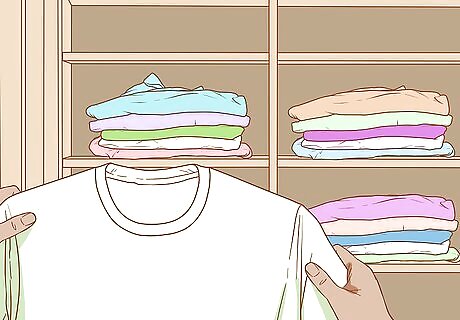
Dedicate one drawer to each type of clothing. When putting your clothes away into your dresser, consider using one drawer for each type of clothing. This means placing all of your shirts into the top drawer, your pants and skirts in the next drawer, and your less-worn/out-of-season clothes in the bottom-most one. If your dresser has some small drawers, consider using those for small items, such as socks and undergarments.

Consider sorting your clothes by occasion. Keeping clothes separated by occasion can not only help you get ready faster in the morning, but it can help your dresser look more organized. If you have to wear a uniform to work or school, keep your uniform pieces in one drawer, and your casual clothes in another. Be sure to keep the shirts separate from the pants and skirts. You can also keep both your casual shirts and work shirts in one drawer: keep the casual shirts on one side of the drawer, and the work shirts on the other. Do the same thing for the pants and skirts.
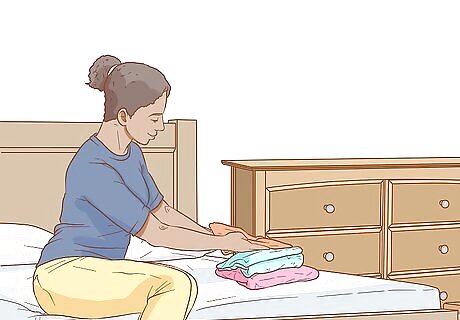
Fold and stack your clothes by color. When folding your clothes and putting them away, consider sorting them by color. Keep all of your black shirts in one stack and all of your white shirts in another. If you have a lot of colors and not a lot of space, you can keep all of the light-colored shirts in one stack, and all of the dark-colored shirts in another. EXPERT TIP Ashley Moon, MA Ashley Moon, MA Professional Organizer Ashley Moon is the Founder and CEO of Creatively Neat, a virtual organizing and life coaching business based in Los Angeles, California. In addition to helping people organize their best life, she has a fabulous team of organizers ready to de-clutter your home or business. Ashley hosts workshops and speaking engagements at various venues and festivals. She has trained with Coach Approach and Heart Core for organizing and business coaching respectively. She has an MA in Human Development and Social Change from Pacific Oaks College. Ashley Moon, MA Ashley Moon, MA Professional Organizer Divide dresser drawers methodically. Strategically organize your dresser drawers by clothing type and color — stash underwear, socks, and delicates together in top drawers, fold shirts by color into middle drawers, and group pants, shorts, and pajamas into bottom drawers so getting dressed is streamlined.
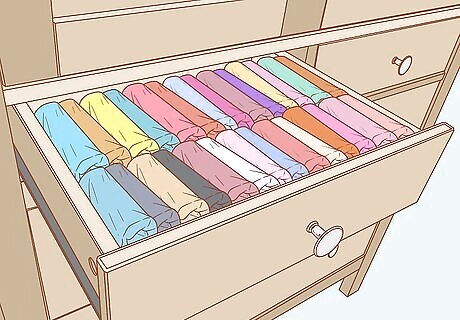
Consider storing your clothes vertically. If you have a lot of shirts, you can save space by folding them, and storing them vertically in your dresser instead of stacking them on top of each other. You will end up with something that looks like the inside of a file cabinet.
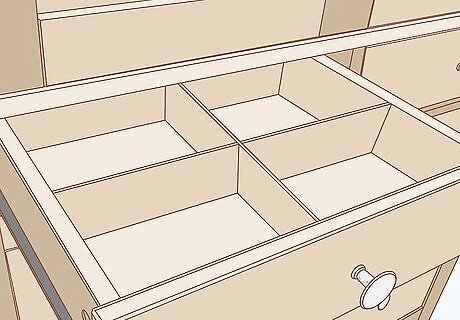
Try using drawer dividers. Placing dividers into your dresser drawers can be a great way to organize small articles of clothing. If your dresser has only large drawers, consider reserving one for your undergarments and socks; use a divider in the drawer to prevent the undergarments and socks from mixing. You can make your own drawer dividers by covering cardboard boxes with colorful scrapbooking paper or wrapping paper. You can also insert several small boxes into the drawer, and using those to keep your items sorted. Make sure that the drawers are short enough to fit inside so that you can close the drawer.
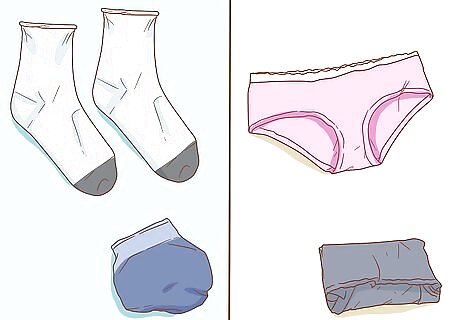
Roll up your socks and fold your undergarments. Socks and underwear, though small, can create a lot of bulk and take up more space than they should. You can save space by rolling up your socks and folding your undergarments—this will also help your drawers appear neater and more organized.
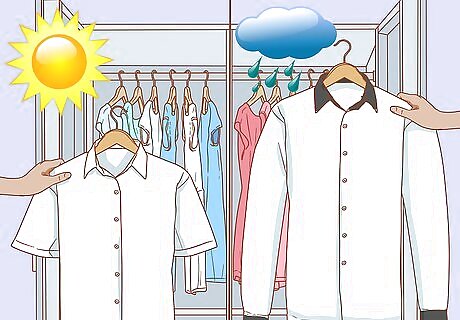
Rotate the clothes in your drawers based on season. You are more likely to wear short-sleeves shirts in the summer and sweaters in the winter. Consider moving clothes to different drawers in your dresser depending on what season it is. During the summer, keep lighter clothes, such as skirts, shorts, and tank-tops in the upper drawers, and the warmer clothes, such as long-sleeved shirts and sweaters in the bottom drawer. During the winter, move the shorts and tank-tops to the bottom drawer, and the warm sweaters and long-sleeved shirts to the upper drawer. Try to keep the out-of-season clothes in one drawer to save space. You can save space in your dresser and make room for more clothes by storing your out-of-season clothes in a drawer beneath your bed. If you have a closet, you can store the out-of-season clothes on a top shelf.
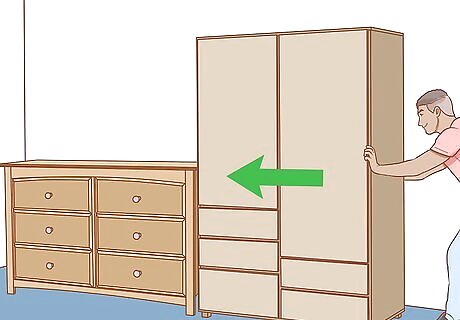
Save space by moving your dresser into your closet. If you have enough room in your closet, you can keep all of your clothes by moving your dresser into your closet. If your dresser is short, then you hang still hang small items, such as shirts, above it. Keeping all of your clothes in one place will save you time in the morning as you get ready for work or school.












Comments
0 comment